by Ken Gargett
As I write this, the new James Bond film No Time to Die has arrived to enchant moviegoers. Sadly, politicians with their border closures and other chaos have prevented attendance and as a long-term 007 fan that it hurts.
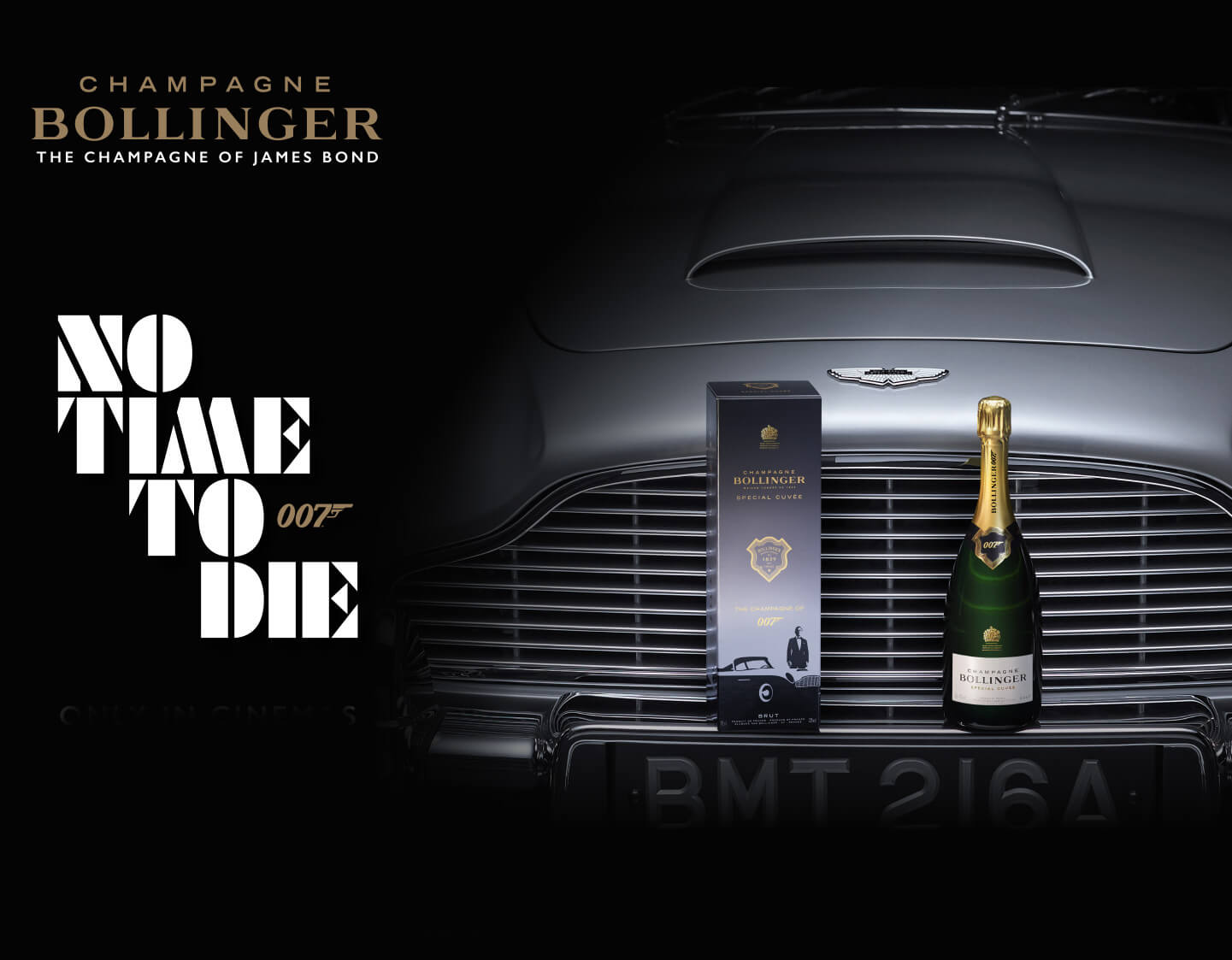
Bollinger champagne is a long-time partner of the James Bond 007 films
Of course, nothing goes with Bond like Bolly, so cracking the latest was some compensation. It would be very easy for me to spend much of this piece going through Bollinger’s long 007 partnerships – with both the people and the films – but whenever a new Bond flick hits the screens, such information is easily found.
Far more relevant I believe is this new Bollinger release. We are not talking the PN VZ 15 or 16, which Bollinger recently revealed; not even the Limited Edition Special Cuvee release that accompanies the film; nor even the 2011 007 Limited Edition, which also accompanies the film (talk about no stone left unturned).
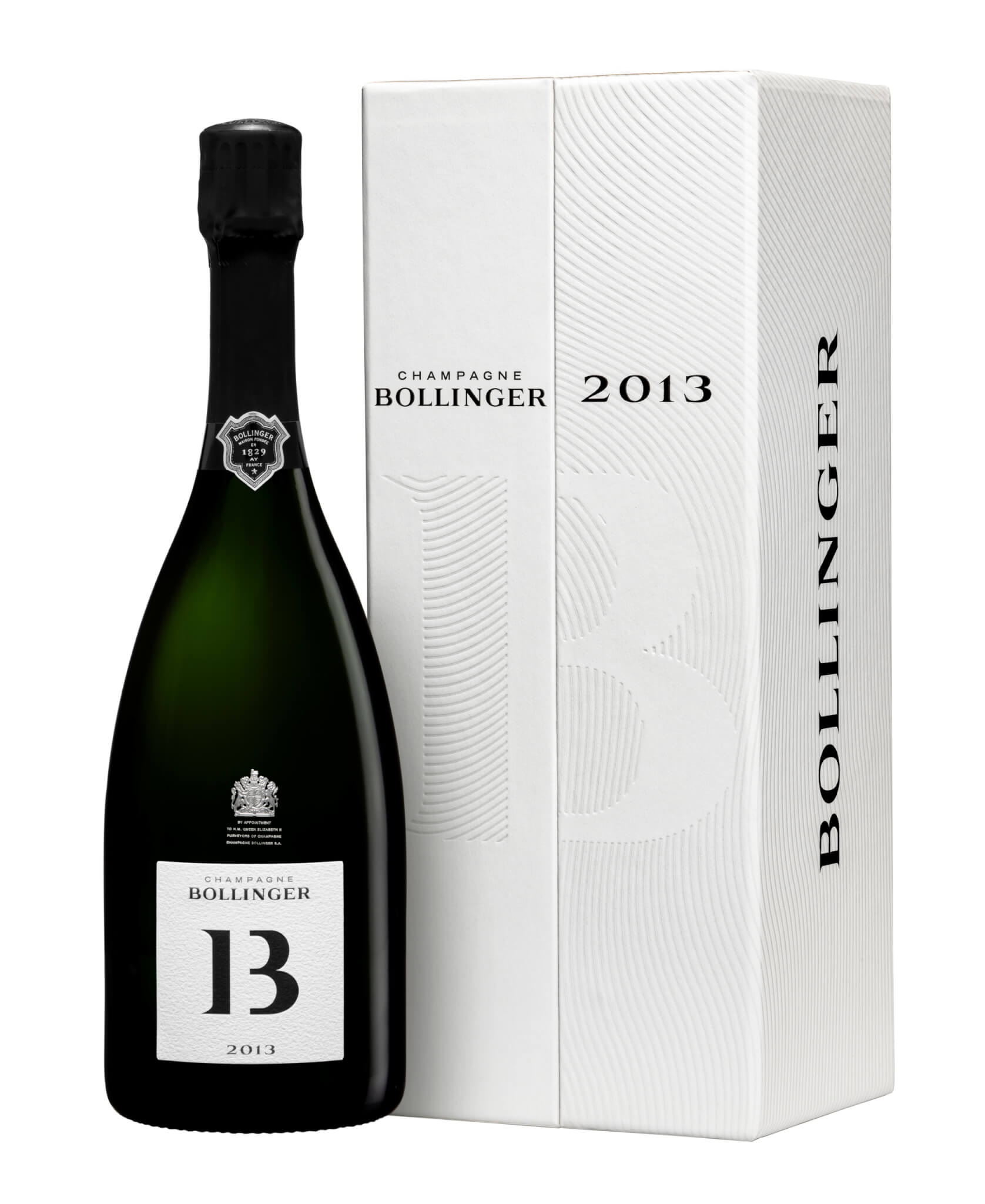
Bollinger B13 champagne
Here I am looking at the new Blanc de Noirs, the B13 from the 2013 vintage (B13 stands for Bollinger 2013, which is probably self-evident). But first, some context.
Where B13 fits in the Bollinger collection
Bollinger is unquestionably one of the great houses in Champagne and it has made some truly memorable bottles. The Special Cuvee (which is the multivintage, though probably more widely known is the non-vintage even though multivintage makes so much more sense) is immaculate; the Grande Année (Bollinger’s vintage) always thrilling; and the R.D. (“Recently Disgorged”) is one of the great prestige champagnes. So yes, I am a fan.
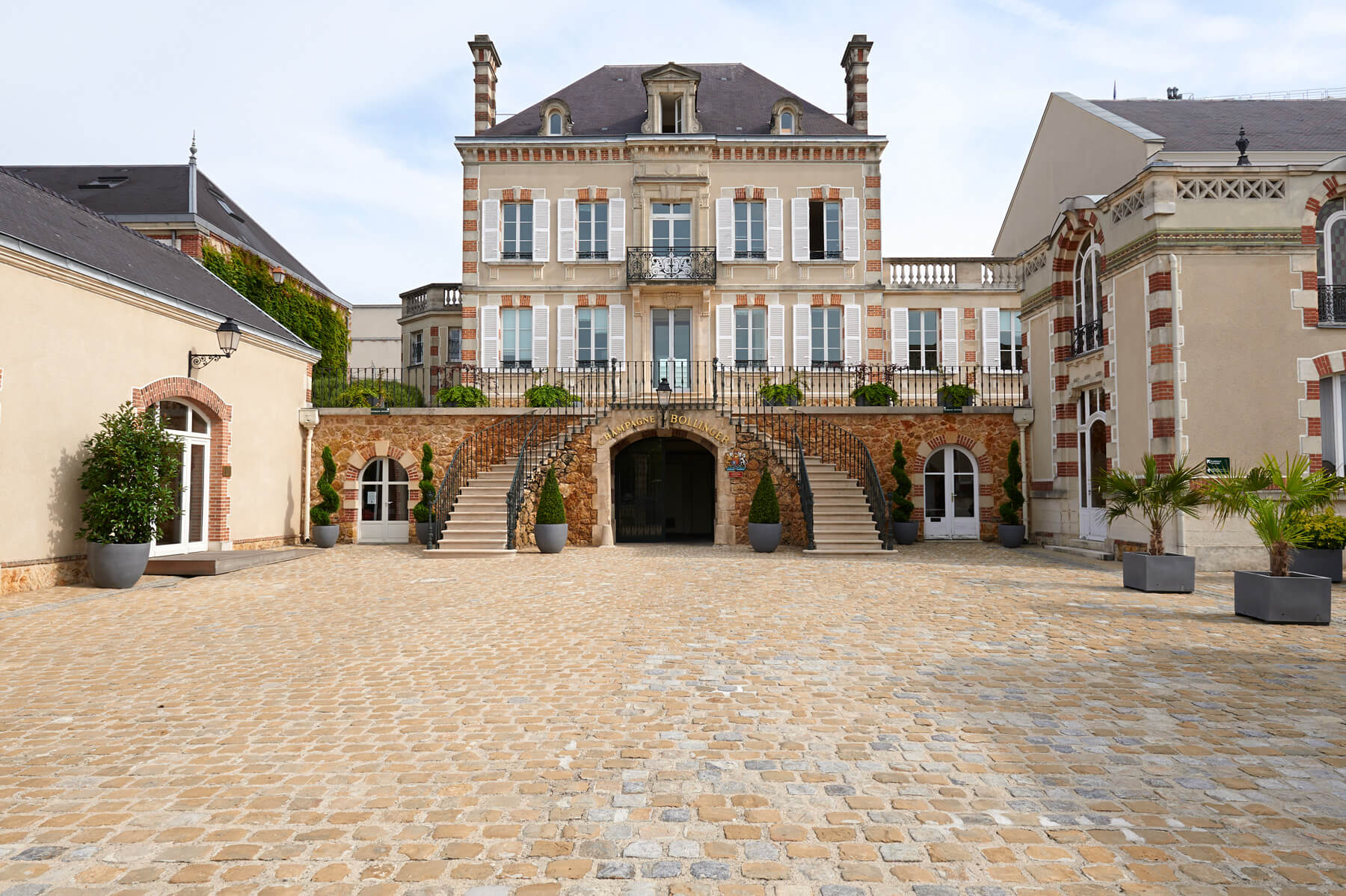
House of Bollinger in Champagne
But Bollinger does have a habit of coming up with various special offerings, limited editions, and one-offs, and I am not sure that all of them match the standards Bollinger has set with its regular wines (regular in the sense of the champagnes mentioned above). I have not tried it, but I wonder quite why the house would be dabbling with a champagne from 2011, universally recognized as the least impressive vintage for around a decade.
This all started with the release of the 2003 by Bollinger. Far from the worst champagne going around, it was still from the 2003 vintage, so what on earth was one expecting (silk purse/sow’s ear springs to mind)? I still do not understand what Bollinger thought it had to gain, but that is in the past.
“Far from the worst” is hardly what one expects when one opens Bollinger.
So where does the B13 fit? This is another curious one. The 2013 is undoubtedly a better vintage than 2003, but it is not universally loved (I heard the chef de cave from a very famous house expressing the view that 2013 was très ordinaire indeed – always remember that houses source from different regions and vineyards and so a year that is ordinary for one may be special for another).
Even Bollinger itself has described the 2013 vintage as “turbulent circumstances.” The general consensus seems that it is excellent for Chardonnay but less exciting for Pinot Noir. And B13 is a Blanc de Noirs – in other words, 100 percent Pinot Noir.
It might seem as though Bollinger is fighting upstream already, but remember that this is the house that makes VVF (Vieilles Vignes Françaises, but almost everyone simply calls it “VVF”). VVF is for many the most legendary Blanc de Noirs made in Champagne. So if anyone knows how to successfully make this style, it is Bollinger.
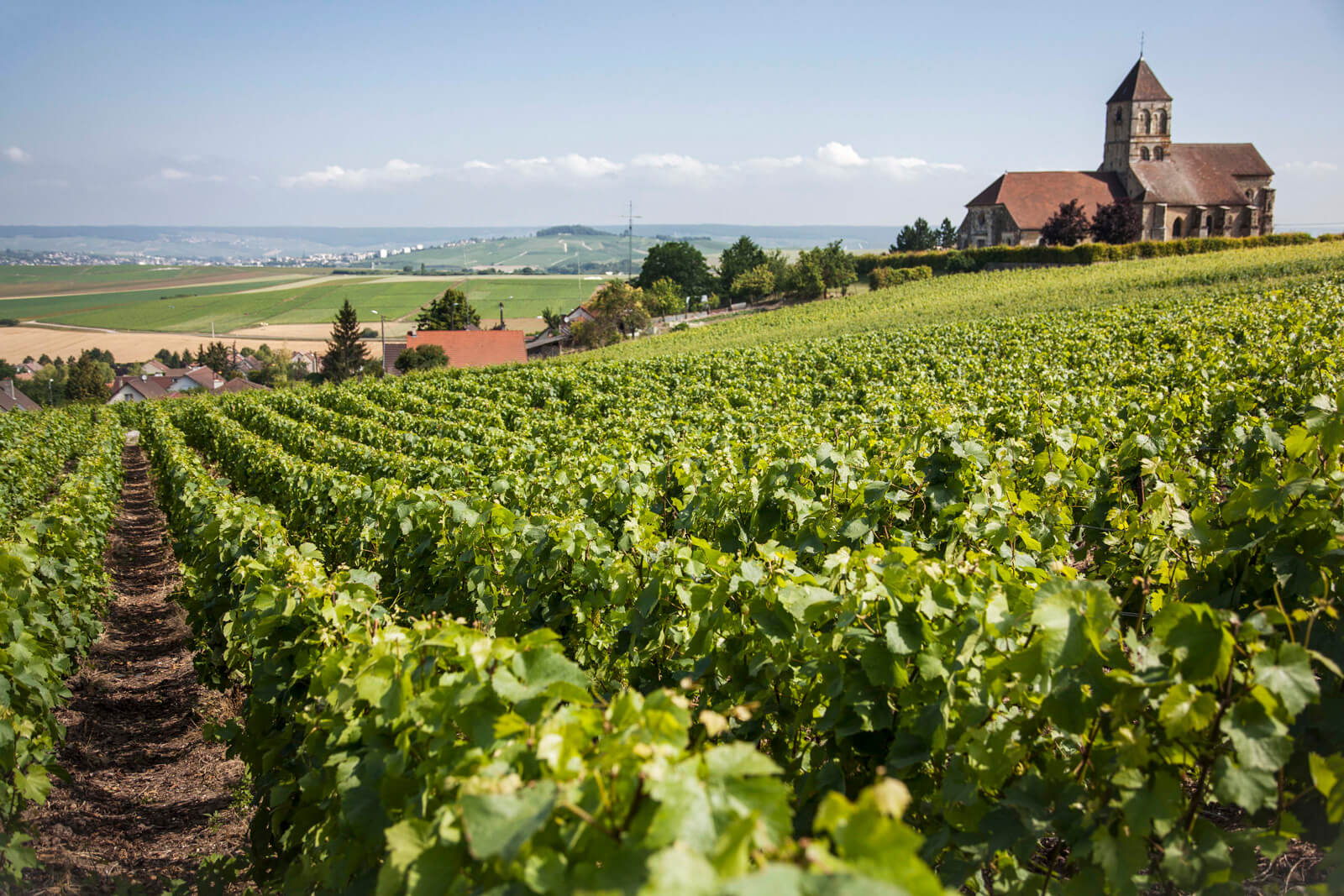
Bollinger vineyards in Champagne
VVF is unique. It comes from two tiny plots – it was three, but one was effectively lost as I will explain. The three plots totaled just over one-third of a hectare and produced around 100 to 150 dozen 12-bottle cases (does anything actually still come in 12-bottle cases?). In total. Given conditions and standards mean that it is only made, say, three or four times a decade. You can see why this is so rare and so rarely enjoyed. And so expensive.
What makes it special is that these are ungrafted plots and hence open to the dangers of phylloxera, an aphid that arrived in Europe in the 1800s, an unwelcome guest from the Americas. American vines were resistant to phylloxera but not the European. And so the aphid proceeded to start chomping its way across the continent, destroying prized vineyards as it went.
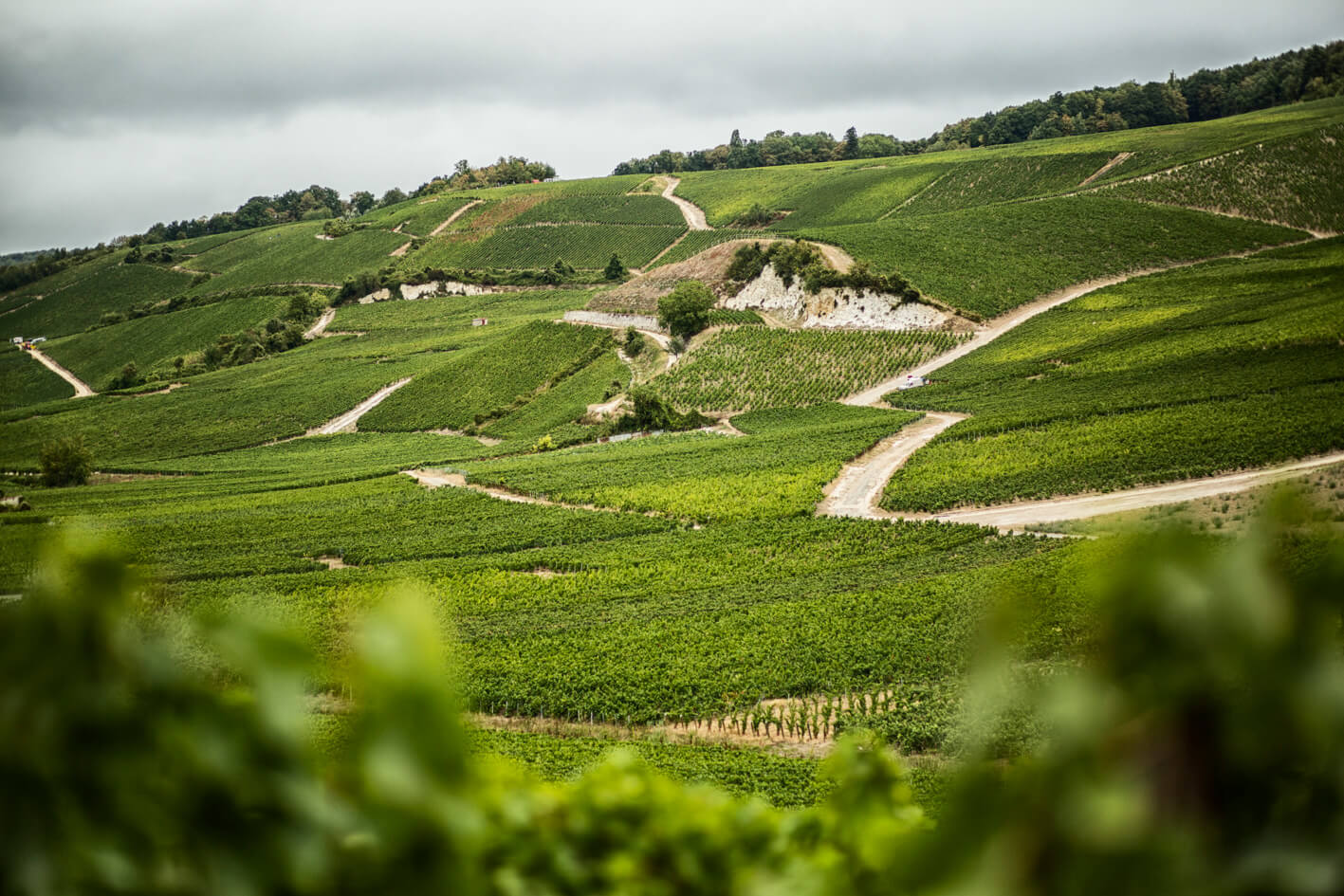
Bollinger vineyards in Champagne
It looked like the European wine industry might be destroyed – some of the ideas to prevent its destruction of vines were bizarre: flooding vineyards, having schoolchildren march out of class and relieve themselves on the vines, burying a toad next to every vine. In the end, European wine was saved by using American rootstocks and grafting European vines onto them. There are very, very few ungrafted vines to be found anywhere in Europe.
For reasons of which Bollinger is not quite sure, or not disclosing, these tiny plots have remained phylloxera-free, although that third plot succumbed a few years ago, leaving just two: Clos Chaudes Terres and Clos St.-Jacques. As a Blanc de Noirs, both plots are Pinot Noir. The wine, which has been made in suitable vintages since 1969, is quite extraordinary.
Another difference is that the vines are not planted as you would normally expect in a vineyard. Rather, as young vines they are planted en foule, which basically means that they are layered over each other in the way that one might have found native vines centuries ago. No trellising here. The canes are simply bent over and pushed into the ground to develop new roots for the next year’s crop. So technically, even though vieilles means “old,” the vines are anything but. The reference to “old” is to the method of growing the vines.
But B13 is not the VVF.
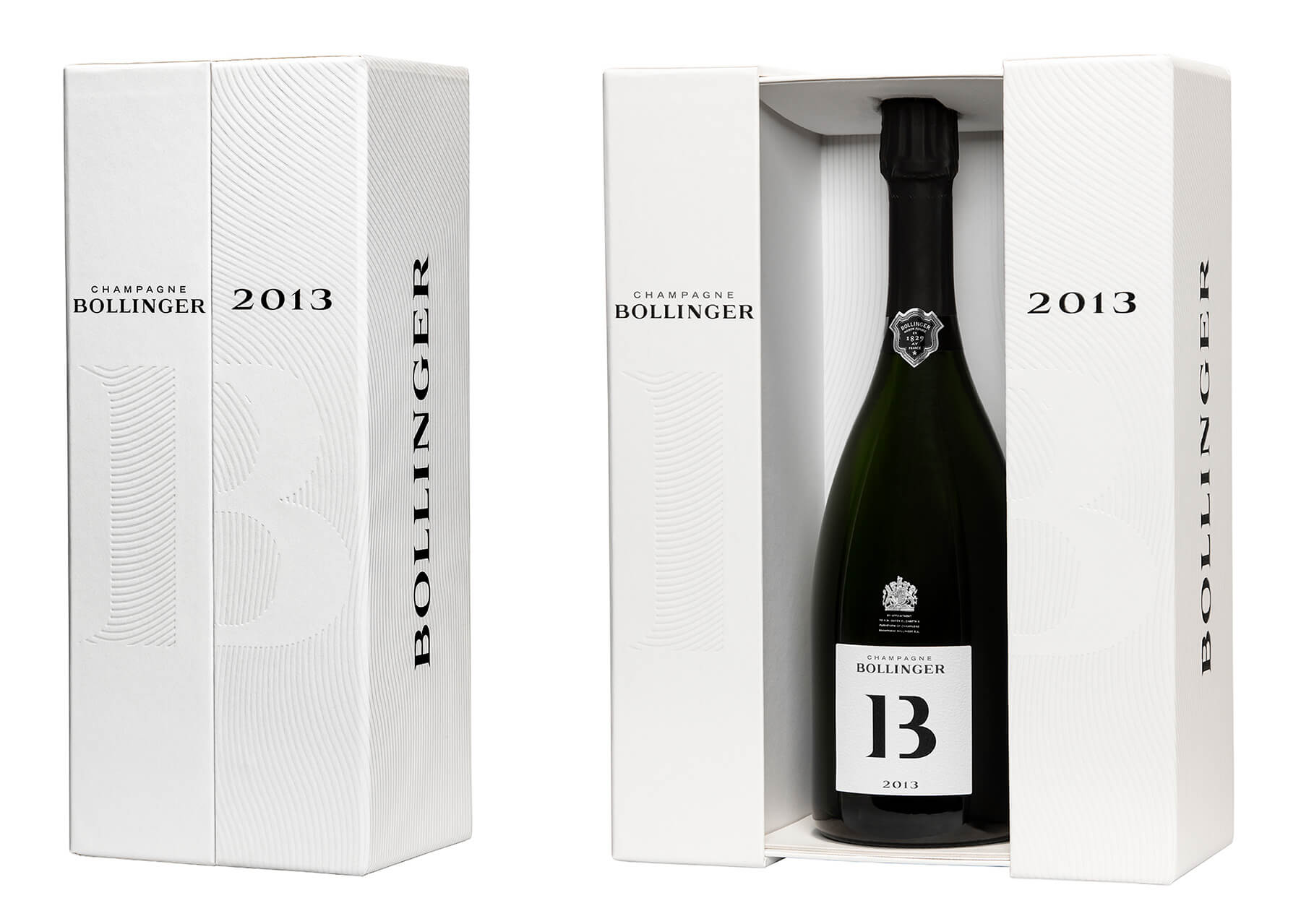
Bollinger B13 champagne
In dealing with this “turbulent” harvest, Bollinger has relied on the sustainable vineyard management practices and ethical farming practices that had been put in place well before this vintage. In 2012, Bollinger received the certification of High Environmental Value (HEV). In 2014, the house then received further certification for its work on sustainable development known as the Viticulture Durable en Champagne.
The conditions encountered in 2013 certainly don’t sound conducive to a great vintage. A lengthy winter – one description of it was “never ending” – with both frosts and snow, a cool, wet spring, and then a very hot summer, all of which meant a late harvest. The conditions in summer plus a cool October for the harvest saved the year.
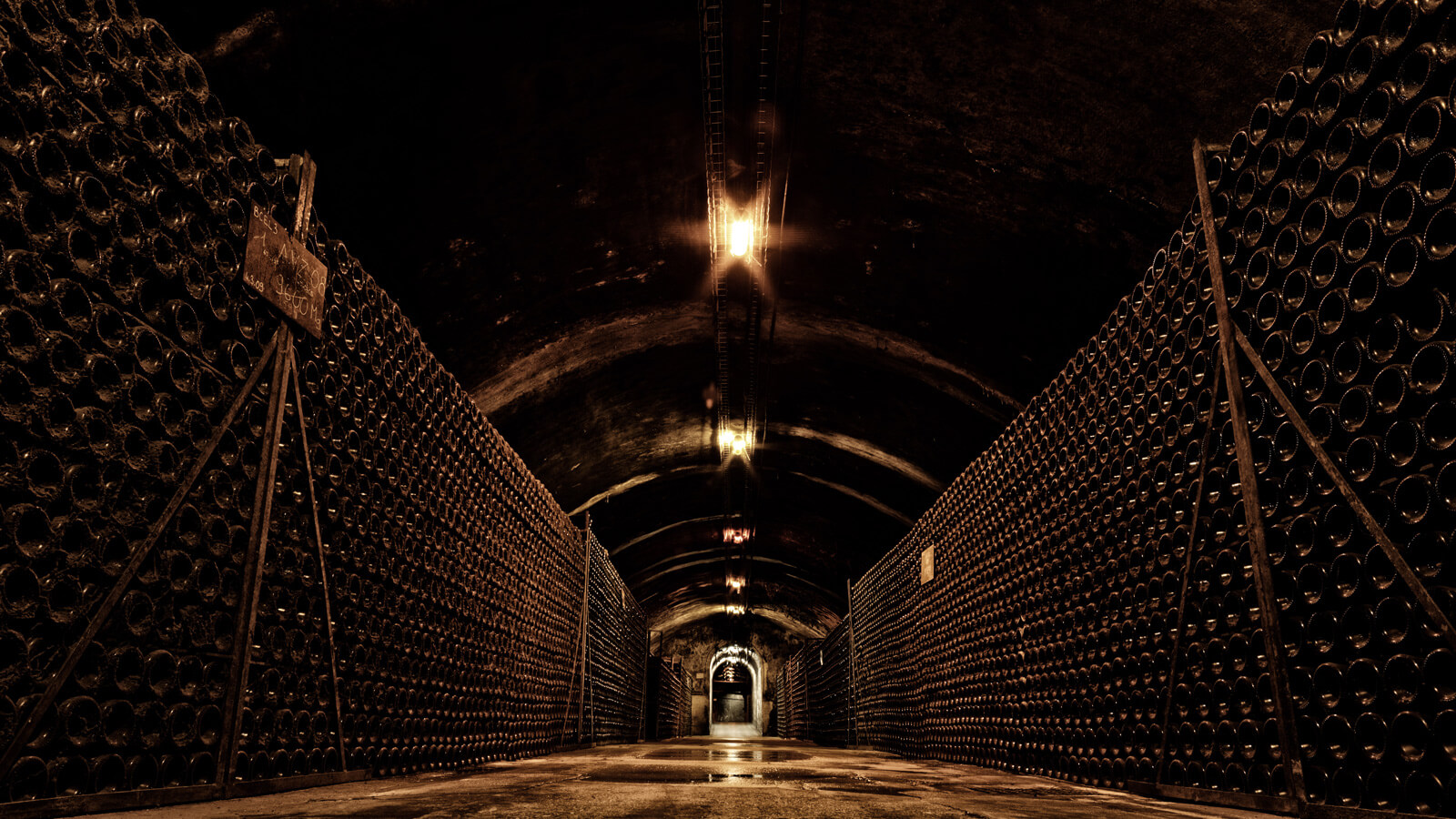
Bollinger champagne cellar
Bollinger is a Pinot house and its vineyard holdings are very much focused on the great Pinot Noir vineyards of the Montagne de Reims. Bollinger owns 178 hectares of vineyards, which provides around half of its needs, crucial for a project like this. It means that the house can identify and use grapes that reach the standards required. This is why a house like Louis Roederer can so often release wines, including Cristal, from vintages avoided by many: the team is not relying on anyone else for supply, and it knows whether or not the grapes will measure up. More than 90 percent of the grapes used in B13 came from Bollinger’s own vineyards.
Bollinger B13
The details of B13 are that it is a Blanc de Noirs, hence 100 percent Pinot Noir. The grapes are sourced from five crus (three Grand Cru, two Premier); 92 percent of the grapes come from Grand Cru vineyards, the remainder from the two Premier Crus. More specifically, the wine is 52 percent Verzenay, 25 percent Ay, and 15 percent Louvois, which are the Grand Crus. The eight percent from the Premier Cru vineyards constituted one percent Mareuil-sur-Ay and seven percent Avenay.
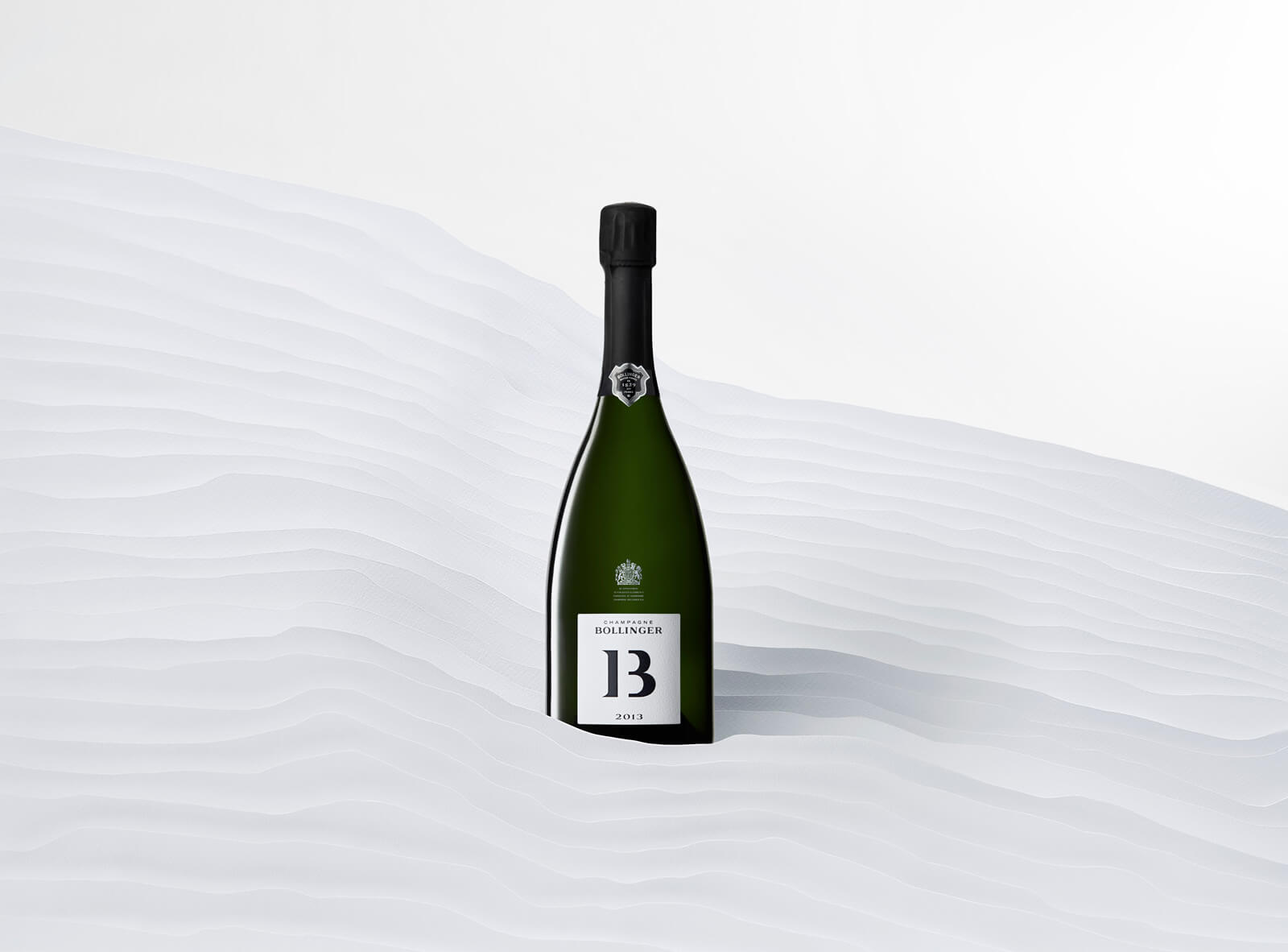
Bollinger B13 champagne
B13 spent seven years on lees and the dosage is six grams per liter. The cost will vary around the world – taxes, retailers, and so forth – but in the UK around £100 and in Australia AUD$250, give or take. For a house well known for its use of magnums, it is a little surprising that no magnums of B13 were made. The label is both clever and attractive, while the elegant box in which it comes is both recyclable and largely made from recycled materials. Unlike PN VZ 15, PN VZ 16, and their future incarnations, B13 will be a one-off.
Bollinger B13 tasting notes
So how did it taste?
First up, this is chalk and cheese compared to another Bolly one-off like the 2003 (referencing chalk when discussing champagne could be confusing, but you know what I mean). For me, this wine is head and shoulders a better and more enjoyable wine.
A lovely pale, limpid gold. Opens with notes of quince and stone fruits. Cashews and orange rind. There is a lovely smoky note here that lingers throughout. Already showing good complexity, this is ripe and powerful. There is some toast already evident with excellent concentration and length. Lots to like here, but what it is – overwhelmingly so – is a very fine example of a Blanc de Noirs. Unmistakably so. Lovely deep, cushiony texture.
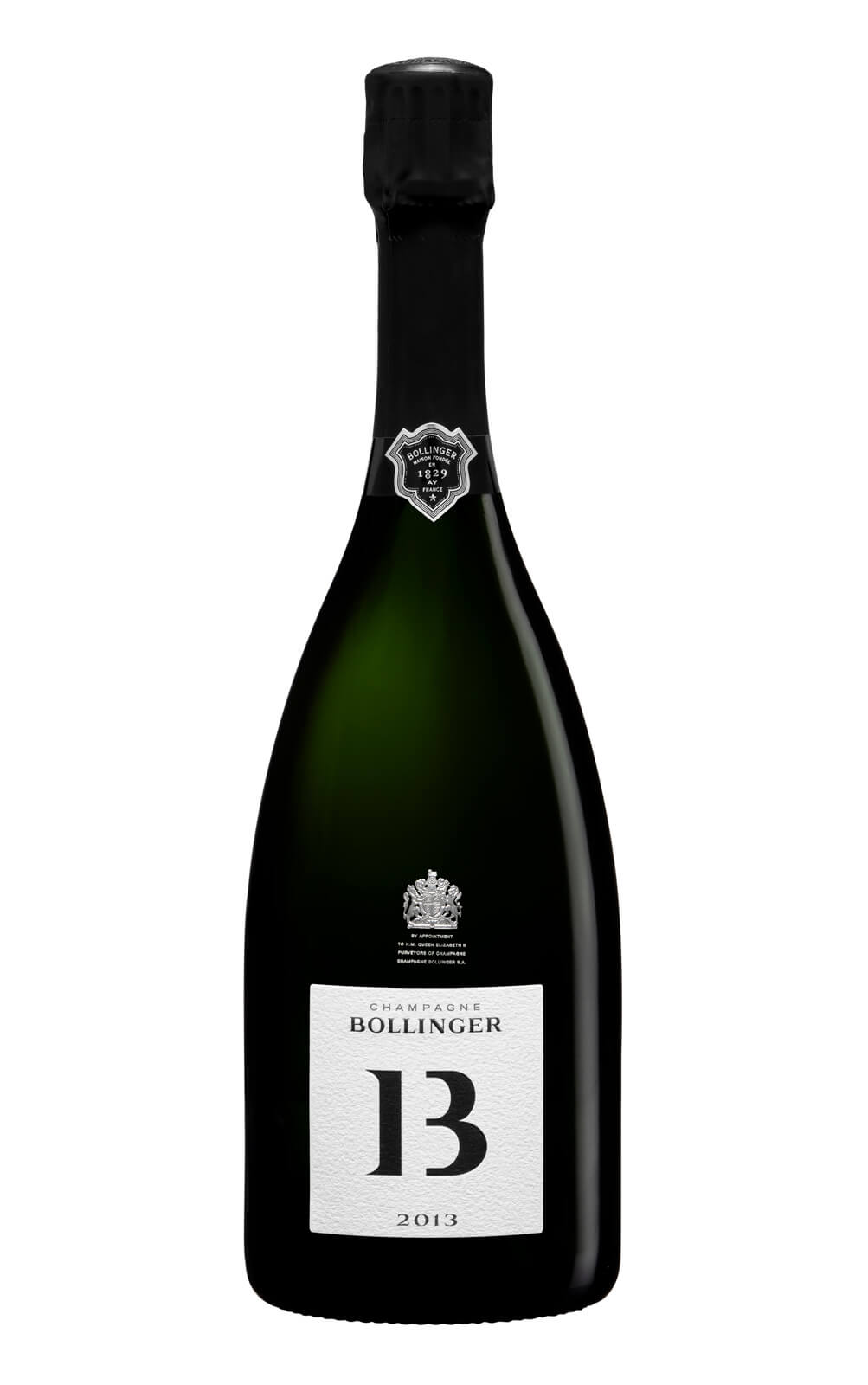
Bollinger B13 champagne
This is no shrinking violet. No one is going to taste this and start thinking how delicate, how elegant. It is a big, bold, full-of-flavor champagne. No prisoners. A lovely truffle note emerged on the palate that reminded me very much of the truffle/fungal/mushroom notes that one often finds in aged R.D.s. Drinking wonderfully well at the moment, but if you have the patience there is no reason not to put this away for a decade or more. 95–96.
For more information, please visit www.champagne-bollinger.com/fr/INT/la-collection-bollinger/cuvee/28.
You may also enjoy:
Bollinger 2008 La Grande Année Champagne: Still Young, But Already A Classic
Bollinger RD 2004: When It Came To Champagne (And Much Else), Madame Bollinger Had Excellent Taste
Bollinger 2012 Champagne: One Of The Very Best Wines And Vintages Of The Century





















































Leave a Reply
Want to join the discussion?Feel free to contribute!